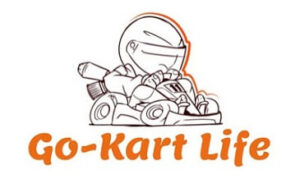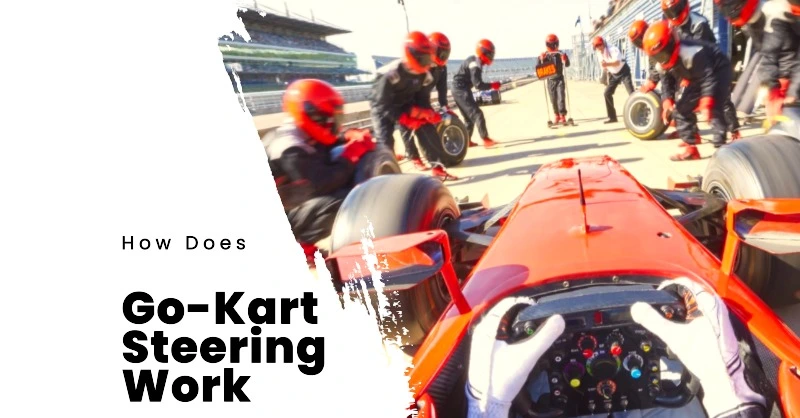If you’re new to karting or already experienced, knowing how go-kart steering works is important for a fun and successful time on the track. In this simple guide, we’ll explore the mechanics of go-kart steering and share helpful tips so you can master the art of karting.
| Key Takeaways |
|---|
| Go-kart steering relies on a direct steering system with key components like the steering wheel, steering shaft, tie rods, and spindles. |
| To master go-kart steering, focus on grip, smooth cornering, utilizing the entire track, and avoiding aggressive steering while maintaining balance. |
| Regular maintenance and adherence to safety standards are crucial for a smooth and enjoyable karting experience. |
| Becoming proficient in go-kart steering requires practice, prioritizing safety, and embracing the fun aspect of the sport alongside skill development. |
The Anatomy of Go-Kart Steering
Before we explore the finer details of go-kart steering, it’s essential to understand its basic components. Unlike regular cars, go-karts use direct steering, which lacks suspension and rear-wheel steering.
The main elements of go-kart steering include:
- Steering wheel: Typically made of aluminum, the steering wheel is responsible for the driver’s input to control the kart’s direction.
- Steering shaft: This connects the steering wheel to the rest of the steering mechanism.
- Tie rods: The left and right tie rods attach to the steering shaft and the spindles on each side of the kart.
- Spindles: These crucial components turn when you rotate the steering wheel, enabling the wheels to change direction.
By understanding the relationship between these components, you’ll be better equipped to tackle the twists and turns of the track.
Top Tips for Go-Kart Steering Mastery
Now that you’re familiar with the basic structure of go-kart steering, it’s time to put that knowledge into practice. Here are some expert tips to improve your steering technique:
- Grip the wheel firmly: Use the ‘quarter to three positions to maintain precise control and react quickly to any slides or sudden turns. Remember to choose the right gear ratio for your engine to ensure a smooth ride.
- Turn corners smoothly: Resist the temptation to turn into corners too early, slowing you down. Instead, decelerate before the corner and aim for a later apex while accelerating.
- Use the entire track: The wider you make each corner, the more speed you can maintain. Don’t be afraid to explore the entire width of the track to maximize your performance.
- Avoid aggressive steering: Smooth and gradual steering is crucial for maintaining control in a go-kart. Sudden or aggressive steering can lead to a loss of grip and a potential spinout.
- Stay balanced: Leaning into the turn might feel natural, but it can put more weight on your inside wheels, making it harder to straighten up after a turn. Stay upright and maintain even weight distribution throughout the kart.
Remember, practice makes perfect. Apply these tips consistently, and you’ll soon become a pro at handling any go-kart.
Safety and Maintenance: Ensuring a Smooth Ride
Your steering technique is only as good as the condition of your go-kart. Ensure your kart is well-maintained and adheres to industry standards. A well-serviced kart is critical to a safe and enjoyable karting experience.
Regarding go-kart maintenance, it’s important to replace worn parts and conduct regular checks on the steering system. And remember, always wear the appropriate safety gear for your karting session.
Related Article: How To Improve Go-Kart Steering: Expert Tips and Tricks
Conclusion
Mastering the art of go-kart steering might seem daunting at first, but with a solid understanding of the steering mechanism and a commitment to practice, you’ll be well on your way to becoming an expert kart driver. Put these steadfast tips and techniques into action and watch your skills on the track improve exponentially.
And don’t forget; karting is not only about winning races; it’s also about having a great time and making unforgettable memories with friends and family. As you become more proficient, you may consider upgrading your kart to enhance its performance, with options such as installing a Predator engine or optimizing its gear ratio.
Finally, always prioritize safety while karting. Familiarize yourself with track etiquette, and ensure you wear the appropriate helmets, gloves, and other protective gear. A well-maintained kart and a focus on safety will ensure a thrilling and enjoyable experience on the track.
Frequently Asked Questions
Steering a go-kart is generally not difficult, especially for adults and older children. Go-karts are designed to be user-friendly and easy to control, with responsive steering systems. However, the difficulty level can depend on factors like the type of steering system, the kart’s speed, the driver’s experience, and the track conditions. Beginners may need time to get accustomed to the steering but usually adapt quickly.
Go-kart steering works with a simple system that changes the driver’s actions at the steering wheel into a movement for the front wheels. The steering wheel links to a shaft, which connects to another part called the rack-and-pinion. When the driver turns the wheel, the shaft moves, making the front wheels turn using rods. This lets the go-kart steer in the right direction and follow its path.
There are two main types of steering systems used in go-karts:
Ackermann Steering System: This system allows the inside wheel to turn at a tighter angle than the outside wheel during a turn, enabling smoother and more efficient cornering. It is a popular choice for go-karts because of its simplicity and effectiveness. The Ackermann steering system uses steering arms and tie rods to achieve the desired turning angle for each wheel.
Rack-and-Pinion Steering System:
Comprising a rack and pinion gear set, this system transforms the steering wheel’s rotational motion into a linear movement for the wheels. The steering wheel connects to the pinion gear, which engages with a toothed rack. When the driver rotates the steering wheel, the pinion gear shifts the rack left or right, pushing or pulling the tie rods and turning the front wheels. This system boasts precision and responsive steering.

Goran, an experienced go-kart racer, fuels GoKartLife.com with his passion and expertise. He offers valuable insights and tips for fellow enthusiasts, fostering the growth of the go-kart community. Join Goran at GoKartLife.com and immerse yourself in this exhilarating sport.

